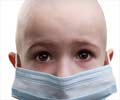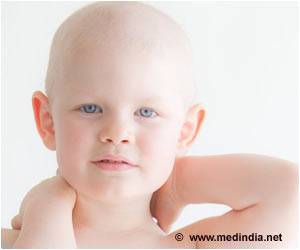Analysis of the childhood cancer - Neuroblastoma exposed immune system T-cell malfunction, which can be treatable with existing immunotherapy.

Integrative analysis of neuroblastoma by single-cell RNA sequencing identifies the NECTIN2-TIGIT axis as a target for immunotherapy
Go to source).
Mapping Immune Atlas Opens to Innovative Combination Immunotherapies
Every year, 25 children in the Netherlands are diagnosed with neuroblastoma, a malignant nerve tumor. Eight of the children whose disease returns after standard treatment die within five years of diagnosis. Better treatment is desperately needed.‘Exploring the immune landscape of tumors can significantly improve the effectiveness of immunotherapy. #neuroblastoma #childtumor #immunecells #Tcells #immunotherapy #medindia’





Immunotherapy is a promising new type of treatment that targets the body’s immune system against the tumor cells. So-called anti-GD2 immunotherapy has increased the chance of survival in children with neuroblastoma by 15% in recent years. But immunotherapy does not yet work well enough, and not yet in all children.To better understand why immunotherapy does not always work, researchers from the Princess Máxima Center ‘mapped’ tumors of children with neuroblastoma in very high resolution. Using single-cell RNA sequencing, they analyzed 24 tumors from 19 children who had been treated at the Princess Máxima Center. Single-cell RNA sequencing is a technique to study cells in a tumor – including both cancer and immune cells – at an individual level. The research was published in the leading journal Cancer Cell.
The scientists analyzed more than 22,000 individual cells. They saw that a type of immune cell, T-cells, did not work properly in the neuroblastoma tumors. These dysfunctional T-cells also often had a protein on their surface called TIGIT.
This protein puts a brake on the activity of T-cells so that they do not attack the tumor cell. An existing class of immunotherapies can switch that brake off. This class of drug, so-called checkpoint inhibitors, activates the immune system, allowing it to clear away the cancer cells.
In 3D mini-tumors, also called organoids, and in mice, the researchers saw that a combination of checkpoint inhibitors against TIGIT and another protein called PD-L1 successfully killed neuroblastoma cells.
Advertisement
The drugs that block TIGIT and PD-L1 and activate the immune system, tiragolumab and atezolizumab, are already being used in studies for cancer in adults, including lung and liver cancer. The researchers are now working with the pharmaceutical company Roche to set up a clinical study for children with neuroblastoma in Europe and the US.
Advertisement
Prof. Dr. Jan Molenaar, research group leader at the Princess Máxima Center for pediatric oncology, who co-led the research, says: ‘It’s fantastic that we can immediately translate the results of very basic research into the biology of neuroblastoma into the clinic – I have never experienced that translation happening so quickly before. I look forward to starting the clinical trial to ultimately see whether children with neuroblastoma will benefit from this new combination of immunotherapies.’
Reference:
- Integrative analysis of neuroblastoma by single-cell RNA sequencing identifies the NECTIN2-TIGIT axis as a target for immunotherapy - (https://www.sciencedirect.com/science/article/pii/S1535610823004361?via%3Dihub)















